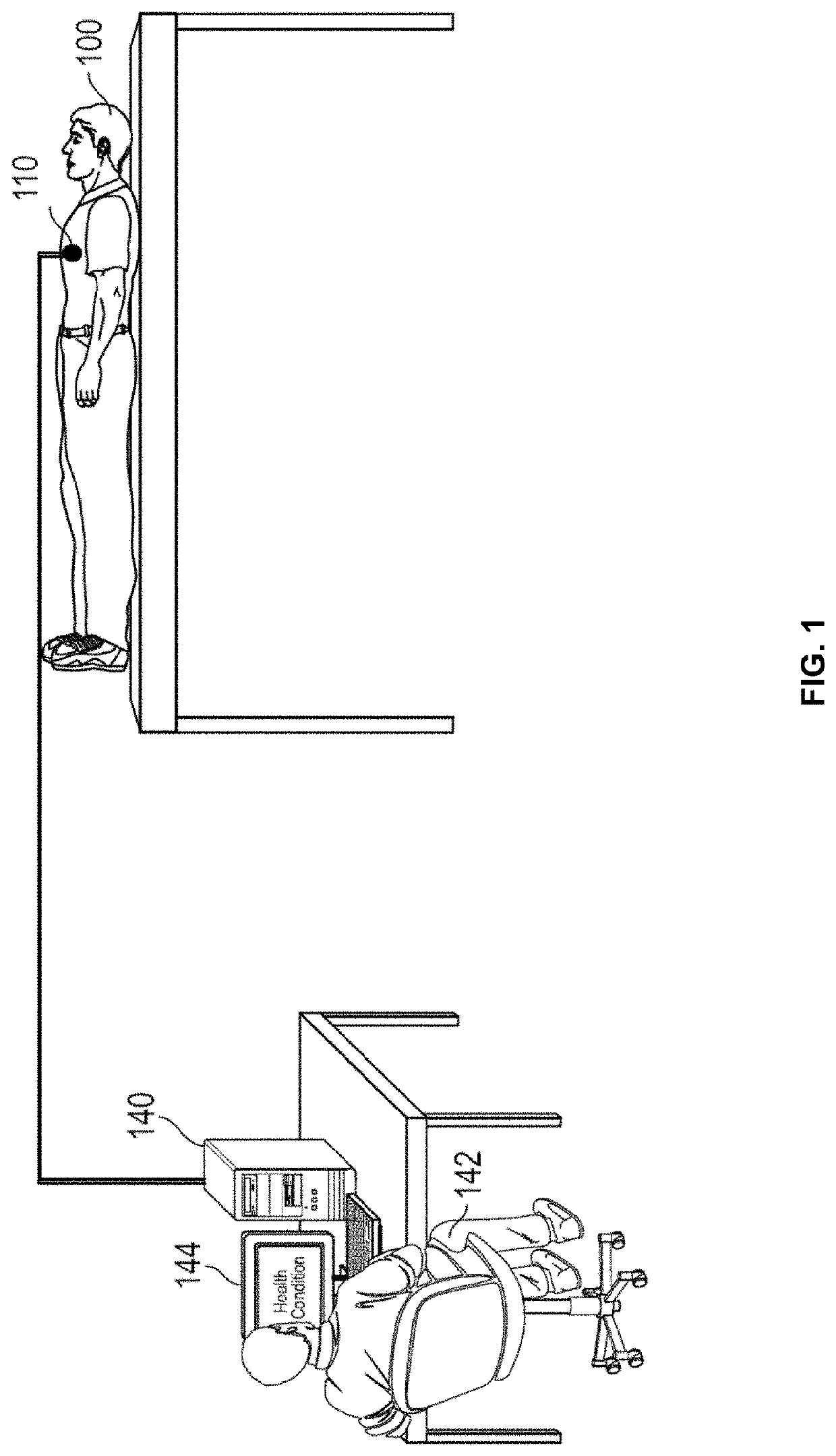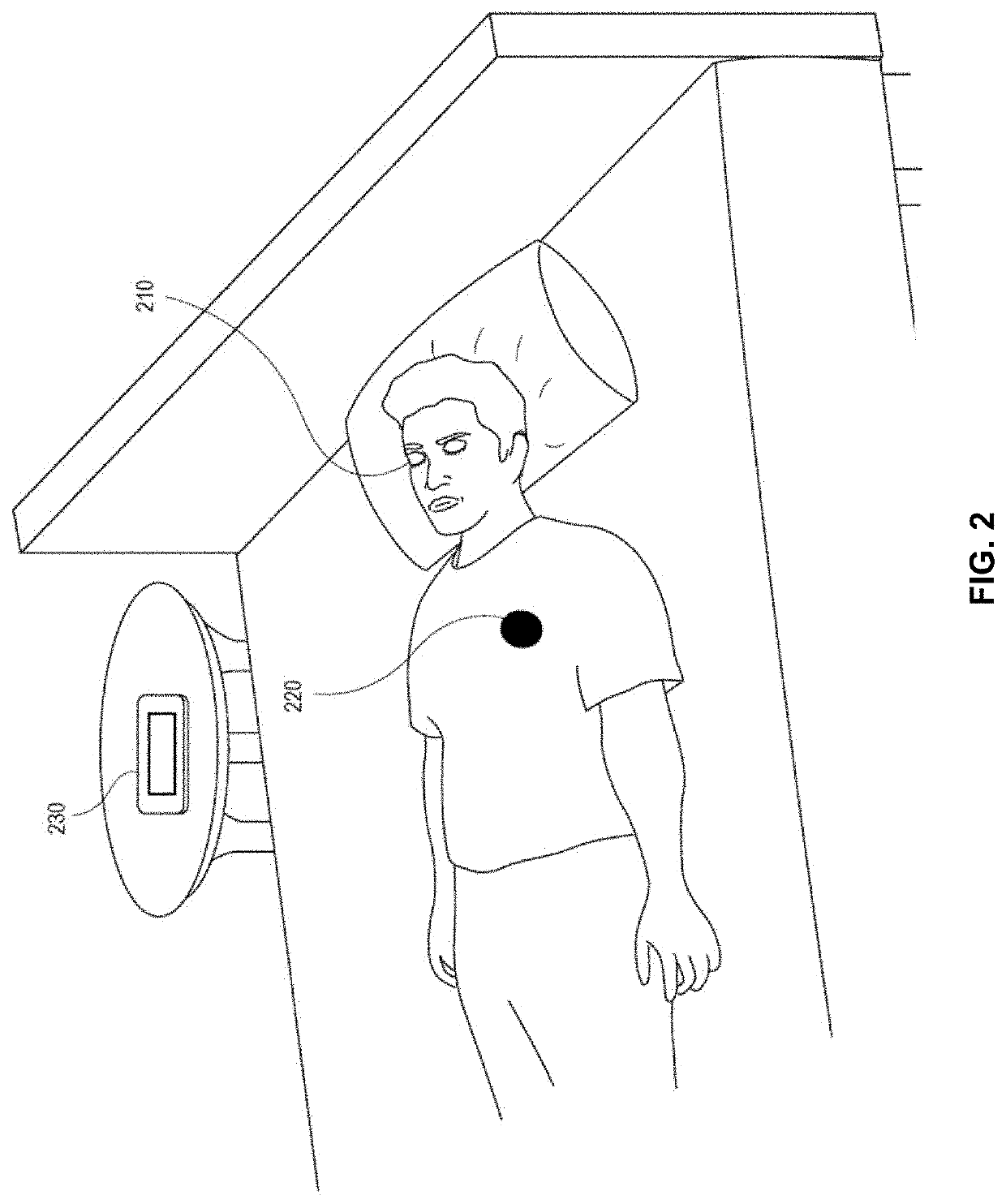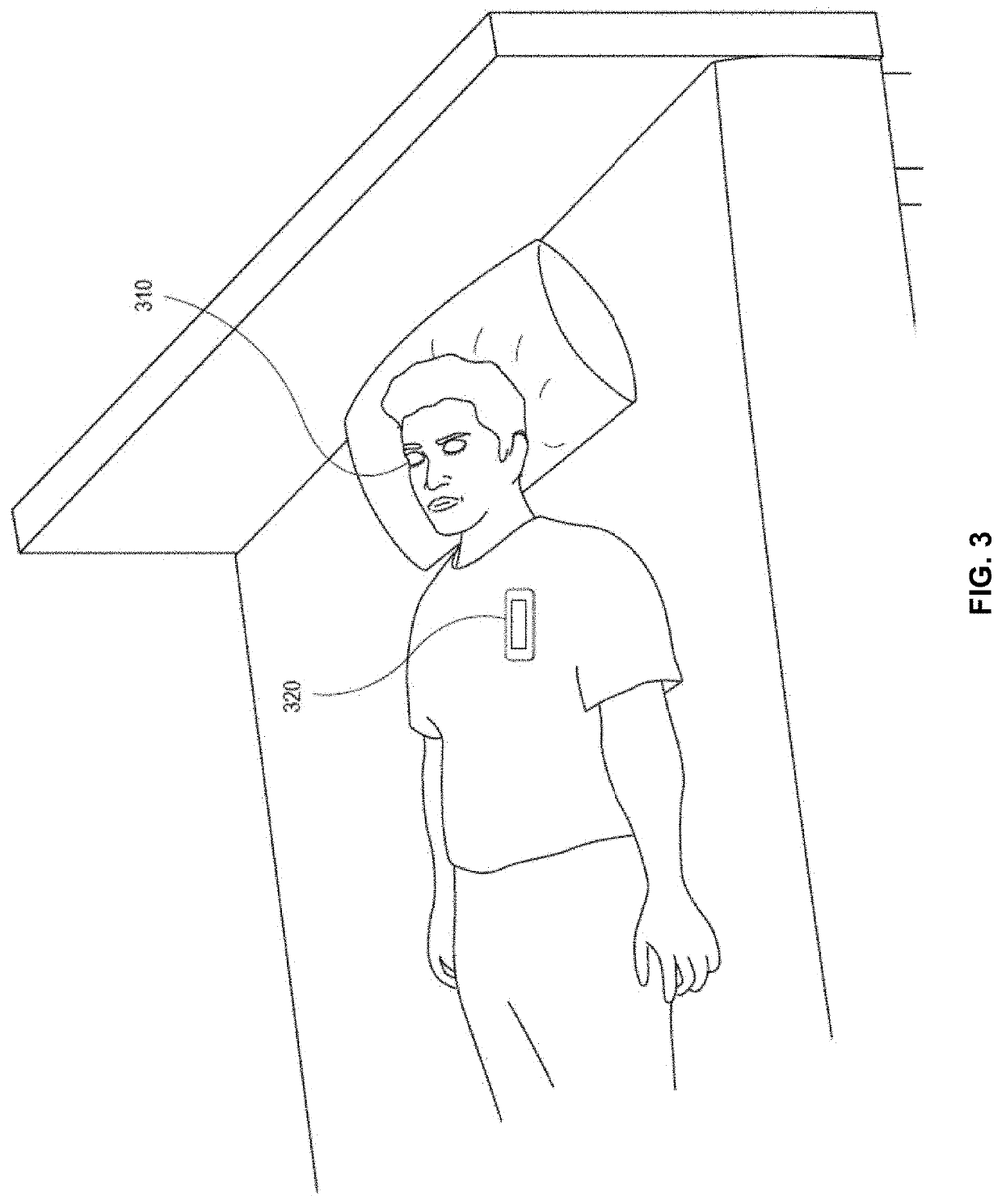Wearable Inductive Damping Sensor
a technology of inductive damping and sensor, which is applied in the field of wearable inductive damping sensors, can solve the problems of causing a large amount of pain, affecting the normal operation of the body, and affecting the normal operation of the body, and human beings may suffer from a hemorrhagic strok
- Summary
- Abstract
- Description
- Claims
- Application Information
AI Technical Summary
Benefits of technology
Problems solved by technology
Method used
Image
Examples
Embodiment Construction
[0045]Generally, diagnosis techniques are described herein. Particularly described are exemplary diagnosis techniques that rely on a sensor system to diagnose a health condition of a subject, such as a human. The sensor system resolves many of the complexity issues of existing diagnosis system and, if needed, may be partially or fully worn or attached to the subject to allow continuous monitoring of the health condition.
[0046]In embodiments, an organ of a subject may be associated with a known conductivity. A change to the conductivity can indicate a health condition of the organ. For example, the organ has a relatively low electrical conductivity, whereas fluid, such as blood or urine, can have a relatively high electrical conductivity. The health of the organ can be diagnosed by measuring its electrical conductivity. In particular, the measured conductivity is expected to be low for a healthy organ. However, if the measured conductivity is high, the organ may not be healthy and th...
PUM
| Property | Measurement | Unit |
|---|---|---|
| diameter | aaaaa | aaaaa |
| diameter | aaaaa | aaaaa |
| resonance frequency | aaaaa | aaaaa |
Abstract
Description
Claims
Application Information
 Login to View More
Login to View More - R&D
- Intellectual Property
- Life Sciences
- Materials
- Tech Scout
- Unparalleled Data Quality
- Higher Quality Content
- 60% Fewer Hallucinations
Browse by: Latest US Patents, China's latest patents, Technical Efficacy Thesaurus, Application Domain, Technology Topic, Popular Technical Reports.
© 2025 PatSnap. All rights reserved.Legal|Privacy policy|Modern Slavery Act Transparency Statement|Sitemap|About US| Contact US: help@patsnap.com



